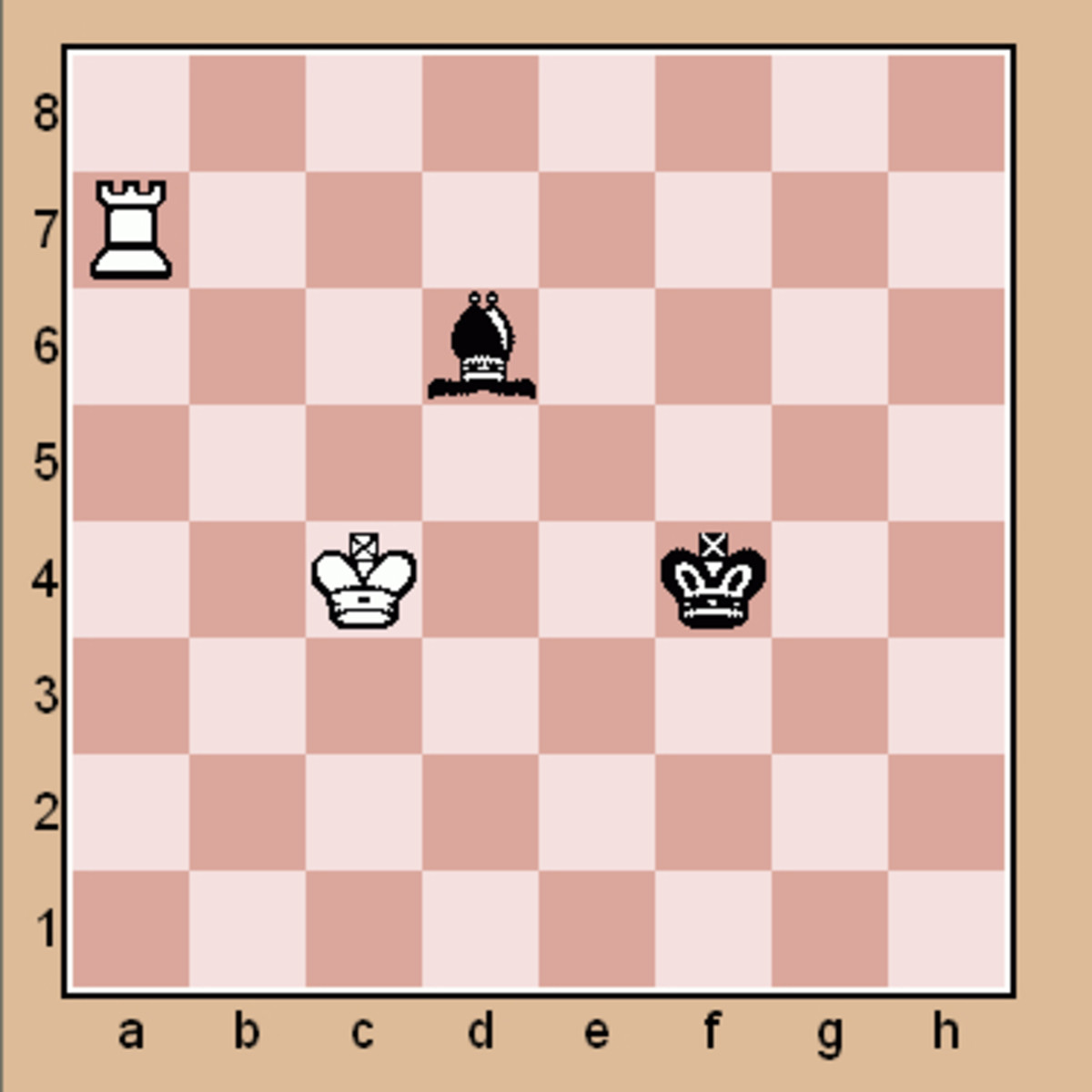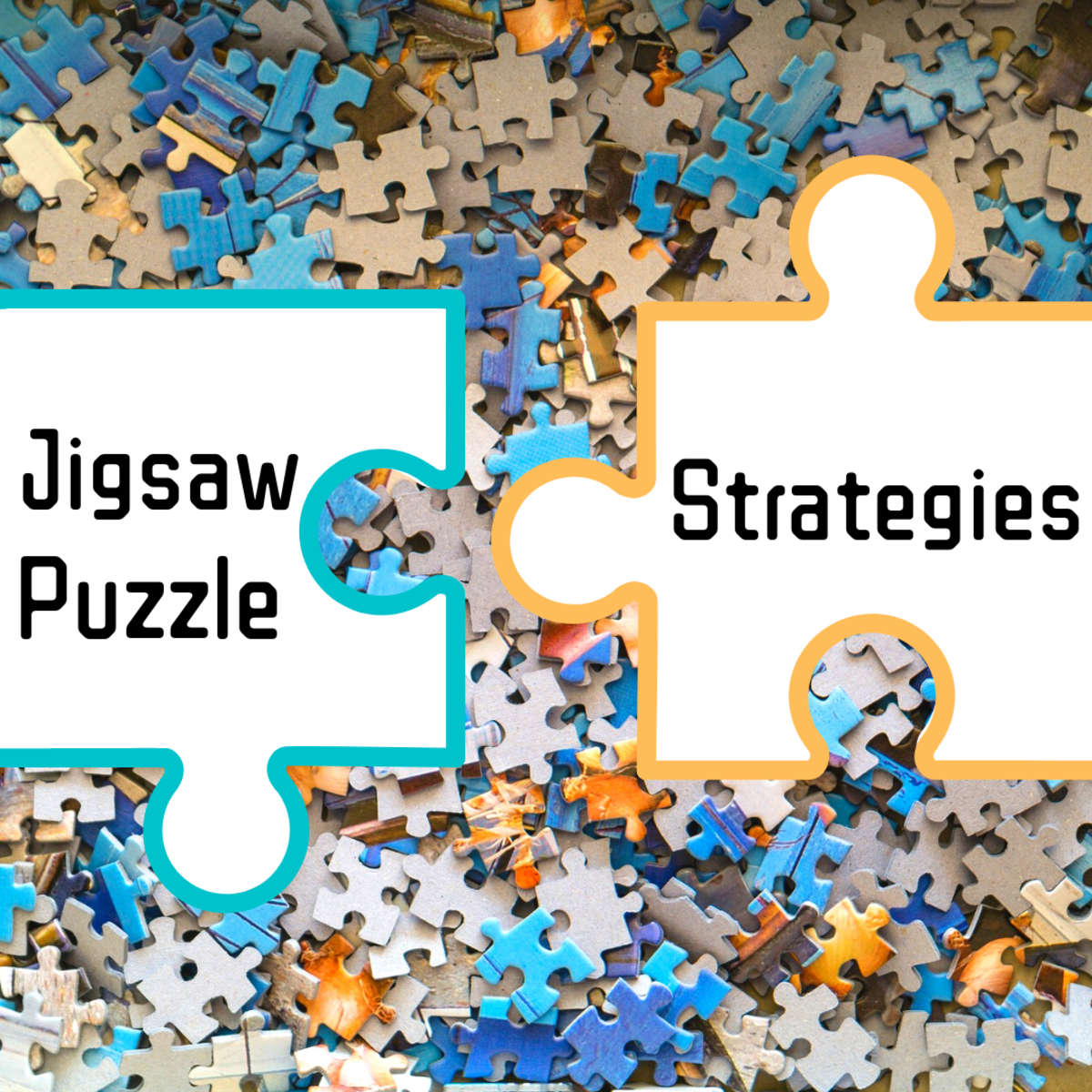Puzzles (used to be called tactics) are a great way to improve your rating through practice and pattern recognition. To do puzzles, from the home page, click ‘Puzzles’ on the left menu. Or click here!
This puzzle is shown in the DDO quest the shroud and is very easy to solve for 3x3 - 4x4 and 5x5 4x4 is simple as it solves with just 1 pass 3x3 and 5x5 require a 2nd pass with some instructions 1st for either pass, simply click the toggle immediately below any lit spots on the top row repeat this until you reach the bottom. Can you solve chess puzzles faster than your opponent in a 3 minute Puzzle Rush? Find out who is the fastest chess puzzle solver. For skatepark or terrain park, shop the latest boards, footwear and clothing at Tactics. Rider approved boardshop since 1999. Lichess tactic trainer: Find the best move for white. Played by 156111 players.
There are multiple ways you can do puzzles on chess.com. You will see all the options on the right side of the screen when you go to puzzles. Click on the icon for whichever type you want to play, and click ‘start!’
Rated Puzzles
Playing these puzzles will give you a puzzle rating in much the same way you get a chess rating. If you get a puzzle right, your rating goes up, if you get it wrong, it goes down.
The amount that your rating changes depends on how fast you complete the puzzle, and also what the rating of the puzzle is compared to your puzzle rating.
After you complete a puzzle you will be able to see your stats on the right side of the screen.
The graph shows your progress for the current session (if you close or refresh the tab this will reset.)
You can also see:
- The puzzle rating. If it’s lower than yours (your puzzles rating, not your chess rating), you wont get as many points, if it’s higher you will get more
- Target time to complete the puzzle. This is based on your current puzzle(tactics) rating
- Speed bonus. This is based on how close you got to the target time
- Pass Rate. This is how often chess.com users successfully solve the puzzle
- Attempts. This is the total number of times the puzzle has been played by all users.
- Themes. These are the different categories that the puzzle is tagged as. If any of these seems incorrect, you can click the 'thumbs down' icon to report a bad theme.
Rated puzzles are a great way to learn, but be aware that your puzzle rating is not necessarily an accurate reflection of your chess rating!
Puzzle Rush
Puzzle rush is a fast-paced, exciting way to learn tactics! In puzzle rush you have either 3 or 5 minutes to solve as many puzzles as you can, but if you get three wrong, the game ends no matter how much time you have left. Getting puzzles right or wrong in puzzle rush mode will not affect your puzzle rating, so don’t worry, and aim for that high score!
You can also choose to play in 'survival' mode, with no time limit. Go as far as you can without getting 3 wrong!
When you complete a puzzle rush, you’ll see your stats and how that round compared to your past scores.
On the right side of the screen you’ll also see a list of all the puzzles you went through. You can click on any one of the puzzles to open it in a separate window where you can take a closer look, or try to solve it again if you got it wrong.
Try to beat your top score, and the scores of your friends! You can see your top score and your position on the leaderboard on the right side of the screen when you enter puzzle rush.
Click on ‘Friends’ to see you ranked among your friends list. ‘Personal’ will show a list of your personal best scores. Your best score will also be listed along with your chess and tactics ratings on your profile!
Practice puzzles every day to improve your score!
Puzzle Battle
Puzzle battle is a 3 minute puzzle rush, but played against another player! See who can get the most right in 3 minutes! Click here to learn more about Puzzle Battle!
Daily Puzzle
This will take you to the forum post for the Daily Puzzle. Have fun solving the puzzle and discussing it with the community in the forum!
Custom
In Custom mode (used to be Learning mode) you get to choose the themes and rating range of the puzzles you practice. There is no time pressure, and no winning or losing rating points, just learning!
The right side of the screen will allow you to choose an area to focus on, and shows you the percentage of problem types you have gotten correct. These numbers are taken from your rated puzzle scores.
Check any number of boxes for the themes you want to practice, and you will be given only puzzles tagged with those themes.
You can also choose to include all puzzles, or only puzzles you have failed, and set a rating range.
I recorded a few videos of myself solving tactical puzzles on lichess.org and I wanted to share my findings.
Here’s the one I published to YouTube, and there are two others within this article.
I’ll be using them as examples to support what you should do when solving any chess puzzle.
Let’s get started
Table of Contents
Chess Tactics vs Positional Decisions
In chess there are times to sacrifice a piece and win the game and there are times when you need to make a quiet move. This is the essential difference between chess tactics and chess positional play.
In his master class, Gary Kasparov said that “Tactics are knowing what to do when there is something to do and positional play is knowing what to do when there is nothing to do.” I think this sums it up perfectly.
It’s up to you to decide in your game if you needed to make one decision or another, but studying how to identify tactics can help out tremendously. You’ll start recognizing patterns and be able to see when you should do in certain situations.
This guide may help you understand better how to make positional decisions.

How to identify a tactic exists
There are a few ways to see when a tactic exists, and then analyzing how to solve it.
Here are two videos where I break down how I approached seeing two puzzles for the first time. I’ve detailed my thoughts in more depth in the rest of the article.
Here’s my approach to solving a 1900 puzzle
Here is an example of how I approached solving a 2263 puzzle
Look for forced moves (checks)
The first thing to consider is if a move is forced. In both puzzles I tried to solve, there were no immediate checks.
However when I got to this move in one of the puzzles, you can see that white’s threat comes to light by immediately identifying the rook can capture g6 with check after the queen moves for c7.
When you start looking at a position, you’ll want to start with the forced moves first. If no pieces can be capture right away, then identify the checks to see what threats there are and then seek to defend against those threats.
Look for unprotected pieces
The simplest of tactics occur when a piece is hanging. The first question you have to ask yourself is, “what happens if I take the free piece.”
Sometimes a free piece is “free” but you’re actually giving up more material or losing by checkmate.
Think a little bit further to see if there is a threat. In this instance, the threat is the rook coming to d6.
It’s tough to see beforehand, but now that the knight has moved, the rook can safely move to d6.
Now we need to think about what is being threatened. If my queen moves to the only safe square of c7, then there is a discovered check on g6 and my queen is hanging.
I will be down a queen for rook and knight, which isn’t by itself overwhelming, but in this position I would rather have white’s position. There is no development for black or initiative, so white should win with proper play.
Is there an in between move (Zwischenzug)
Often a tactic fails because of the in between move (Zwischenzug)
In this example, I was able to take the knight on f6, allowing my rook to move to h2. What I need to watch out for is if the queen can complete an inbetween move with check by Qxg3.
In this case, the answer is no because after the rook on f6 is captured, the queen on g3 now will be pinned to the king on g8 after Rg2.
Look for checkmate ideas
Often you can force a win by either winning a piece or forcing a checkmate.
In this puzzle, when my rook slides over to h2, I’m threatening the queen, but indirectly threatening checkmate when the queen moves out of the way. This means the black queen must sacrifice itself for the rook on h2 and thus you’ve solved the puzzle.
Look for x-ray ideas
Part of a tactic can include looking beyond the immediate threat with an X-ray.
In this case, I see the forcing moves Bxh3 and Qxf3 must occur.
After that, I noticed the rook sliding over to h3 attacks the queen and threatens a potential checkmate on h7. There are other moves that must occr first, but this is how I uncover the idea of how to solve the puzzle.
When you’ve solved the ideas, determine the proper order to the puzzle
In this puzzle, I determined the answer, but needed to find out whether or not I take the bishop first or the knight first.
If I take the knight first, there is no forcing move of gxf6. The black bishop would actually take the bishop on g2 first, and then my rook is still under attack on f6.
To see the answer for both puzzles, be sure to check out the videos that are only found on this website (the videos are unlisted).
Best resources for solving tactical puzzles

There are some great free resources out there as well as paid resources you can use to sharpen your tactics. Here are just a few.
Lichess (it’s free)

Lichess is hands down the best puzzle platform. Honestly, the only issue with it is that there are no thematic puzzle ideas.
When solving puzzles, it’s best to improve your skills with a theme (like mate in 1 or mate in 2, or even knight fork puzzles).
This allows you to get better at the theme and idea so you’re more likely to see it over the board.
What I like about Lichess is that the puzzles are pulled from real games in the lichess database. This means that they actually occurred in games and were not constructed just for the puzzle like many studies.
It also helps you to better see that a tactic can occur at any time in the game.
What I’d like to see from lichess are themes that allow you to solve endgame specific puzzles. If you want a feature like this, sign up for my beta for the Chess Trainer Hub that will include this feature in the second stage of release.
Chess.com (puzzle rush)
Puzzle rush is unique in that you have 3 minutes, or 5 minutes, to solve as many puzzles as possible. There is also a survival mode that allows you to take as long as you’d like to solve the puzzles. This allows you to climb the ladder at your own pace.
I like the survival aspect too because if you minimize the app, you can come back later. I haven’t had it crash on me and restart the puzzle, which is nice.
The only issue with chess.com is that it’s a freemium platform and to get the most out of it, you need to pay.
Even solving the regular tactics puzzles limits you to 5 a day while lichess is free for as many puzzles as you’d like to solve.
The Woodpecker Method

This is a book (also on chessable for $37.99) by GM Axel Smith and GM Hans Tikkanen that gives you hundreds of puzzles to solve.
The goal of the Woodpecker Method is to repeatedly solve the puzzles over and over.
You first run through all 200+ easy puzzles and check your solutions.
Then, knowing the answers, you run through it again and again. This helps impart a better vision of the board to identity certain tactical themes in your game.
I tried it by solving the first 200+ puzzles and ran through a second time. I haven’t since revisited the medium puzzle (I remember there being over 700) and I certainly haven’t tried the expert ones.
My experience was positive with it, but I haven’t completed the entire book myself.
Your Turn
Puzzle Tactics Games
Was there anything I missed that helps you identify a tactic? I’d love to hear about it!
Slide Puzzle Tactics
Let me know if there are other chess puzzle trainers you like as well and I’d love to check them out.
